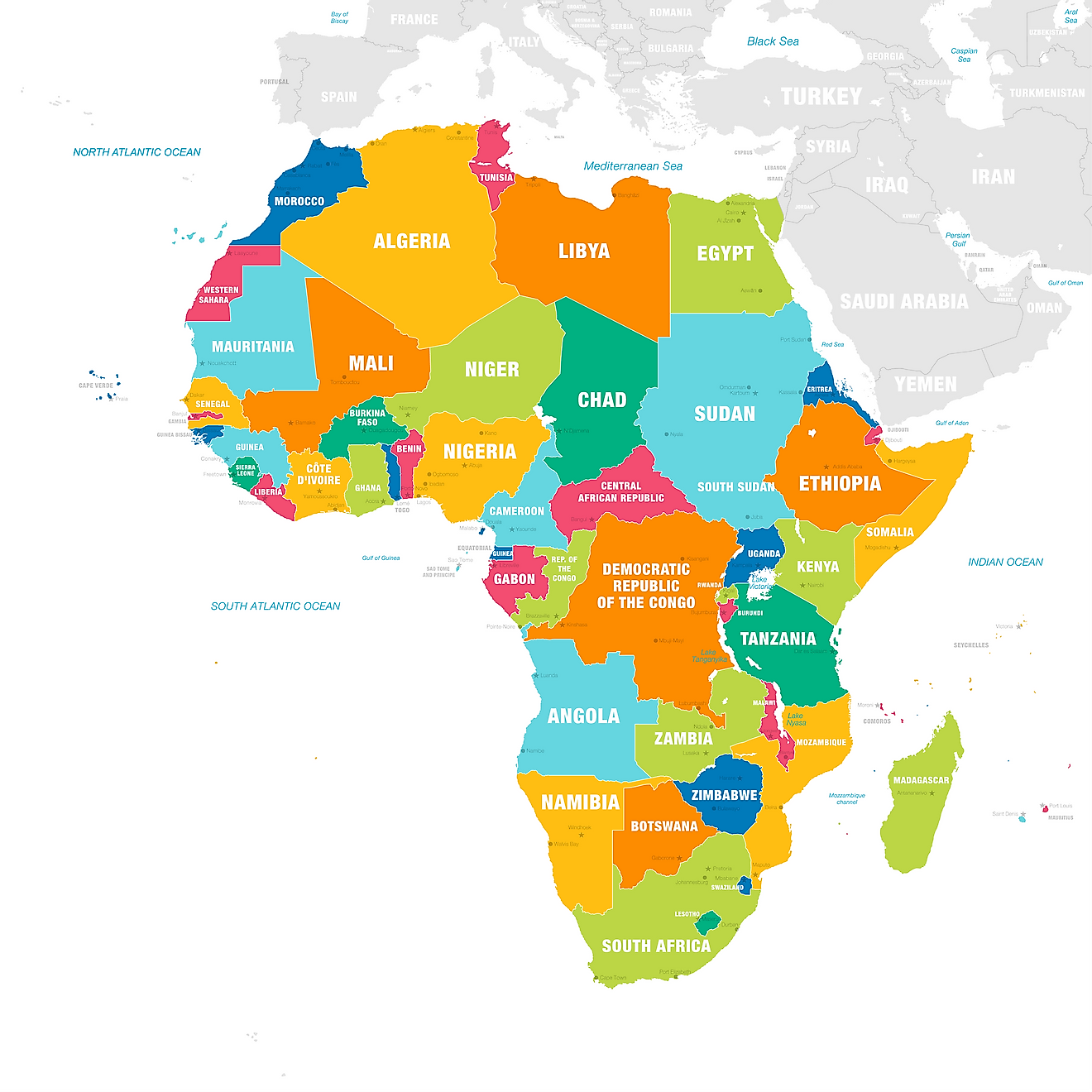How Many Countries Are There In The Middle East?
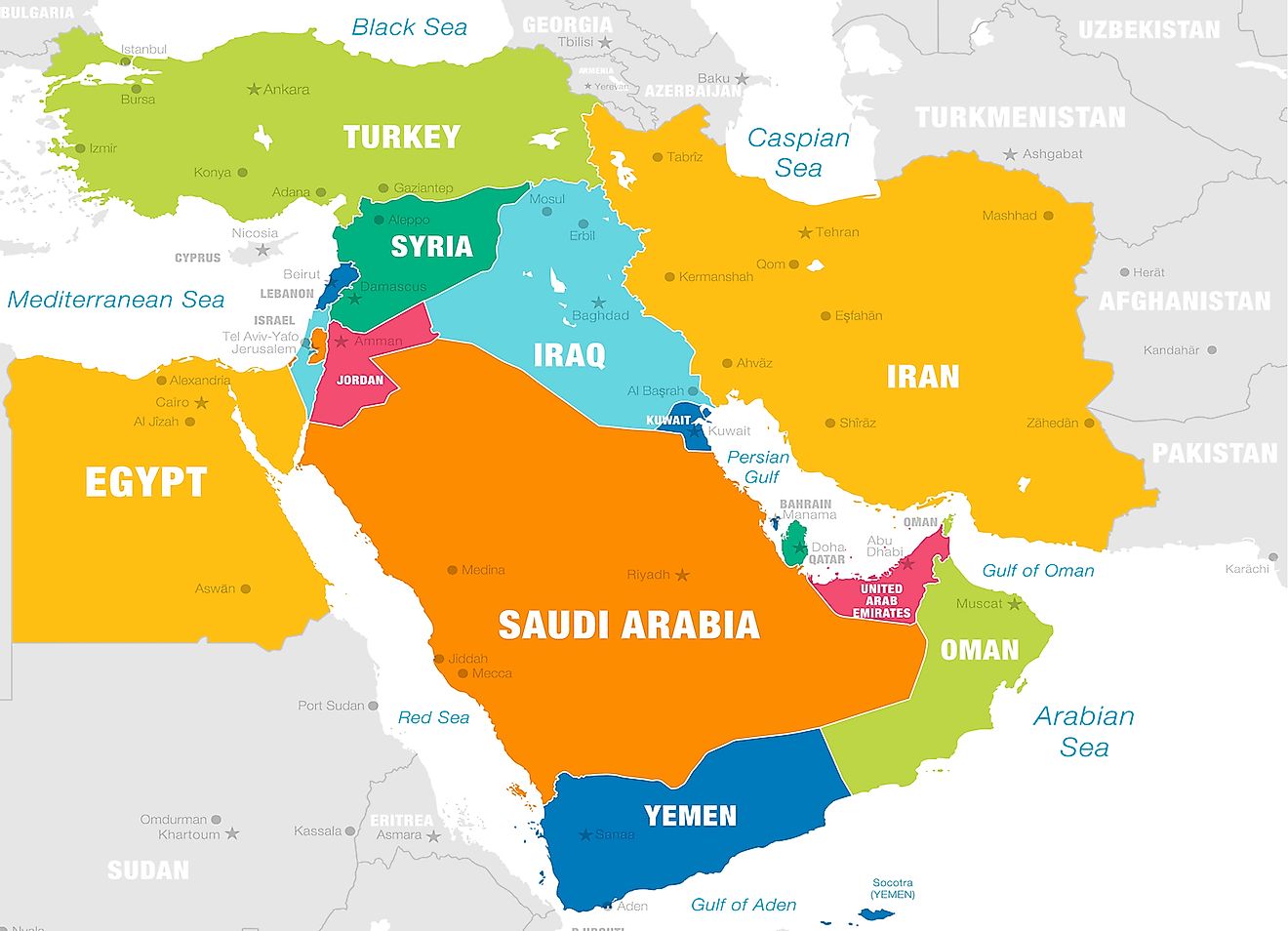
- Middle East includes 18 countries. These are Bahrain, Cyprus, Egypt, Iran, Iraq, Israel, Jordan, Kuwait, Lebanon, Oman, Palestine, Qatar, Saudi Arabia, the Syrian Arab Republic, Turkey, the United Arab Emirates and Yemen.
- Sometimes, the definition of Middle East is extended to include the concept of the "Greater Middle East" that includes Afghanistan, the Comoros, Djibouti, Maghreb, Pakistan, Sudan, and Somalia.
- Middle East includes countries that share common factors like ethnic groups, geographic features, religious beliefs, and political history.
A transcontinental region including parts of Eurasia and Africa, the Middle East includes countries that share common factors like ethnic groups, geographic features, religious beliefs, and political history. The region includes 17 countries. These are Bahrain, Cyprus, Egypt, Iran, Iraq, Israel, Jordan, Kuwait, Lebanon, Oman, Palestine, Qatar, Saudi Arabia, the Syrian Arab Republic, Turkey, the United Arab Emirates and Yemen. These countries are located primarily in Western Asia, Egypt is in North Africa, and a part of Turkey lies in Southeast Europe.
Sometimes, the definition of Middle East is extended to include the concept of the "Greater Middle East" that includes Afghanistan, the Comoros, Djibouti, Maghreb, Pakistan, Sudan, and Somalia. Even further, countries in Central Asia and Transcaucasia might be integrated into the group of Middle East countries.
In this article, however, we will highlight the 18 countries that are unambiguously part of the Middle East.
What Makes Middle East?
As mentioned above, the countries of the region share several features in common. For example, the Middle East region has Arabs as the largest ethnic group. Iranian peoples and Turkic speaking peoples are the next two common ethnic groups. Islam is the largest religion in the region. In fact, the region is the birthplace of Islam, Judaism, and Christianity. As expected, Arabic is the most spoken language here. Other popular languages include Persian, Kurdish, Hebrew, and Turkish.
Bahrain
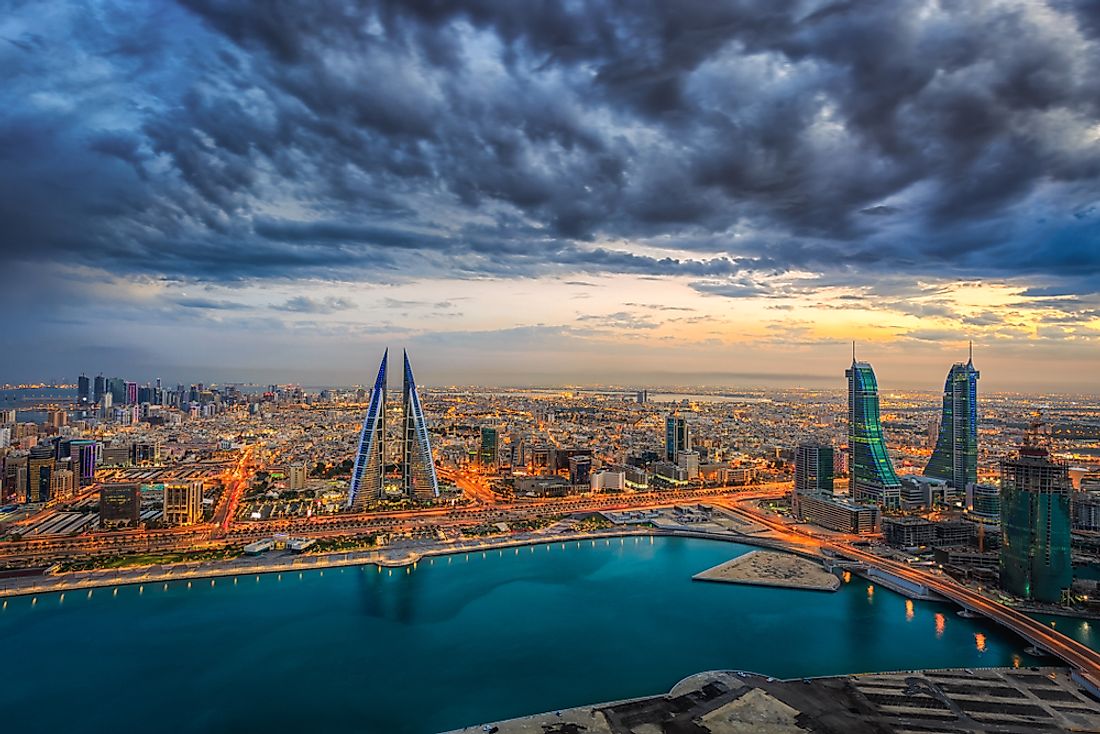
- Area: 760 km2
- Population: 1,641,170
- Capital: Manama
Bahrain is an archipelago nation, located in the Persian Gulf between Saudi Arabia and the peninsula of Qatar. It covers an area of 760 km2 and has a population size of just over 1.64 million. Nearly half of Bahrain's population is foreign nationals. The 2011 Index of Economic Freedom designated the country as having the most independent economy in the Middle East. Before that, Bahrain was recognized for its banking and financial services sector, which are the fastest-growing in the world.
Cyprus
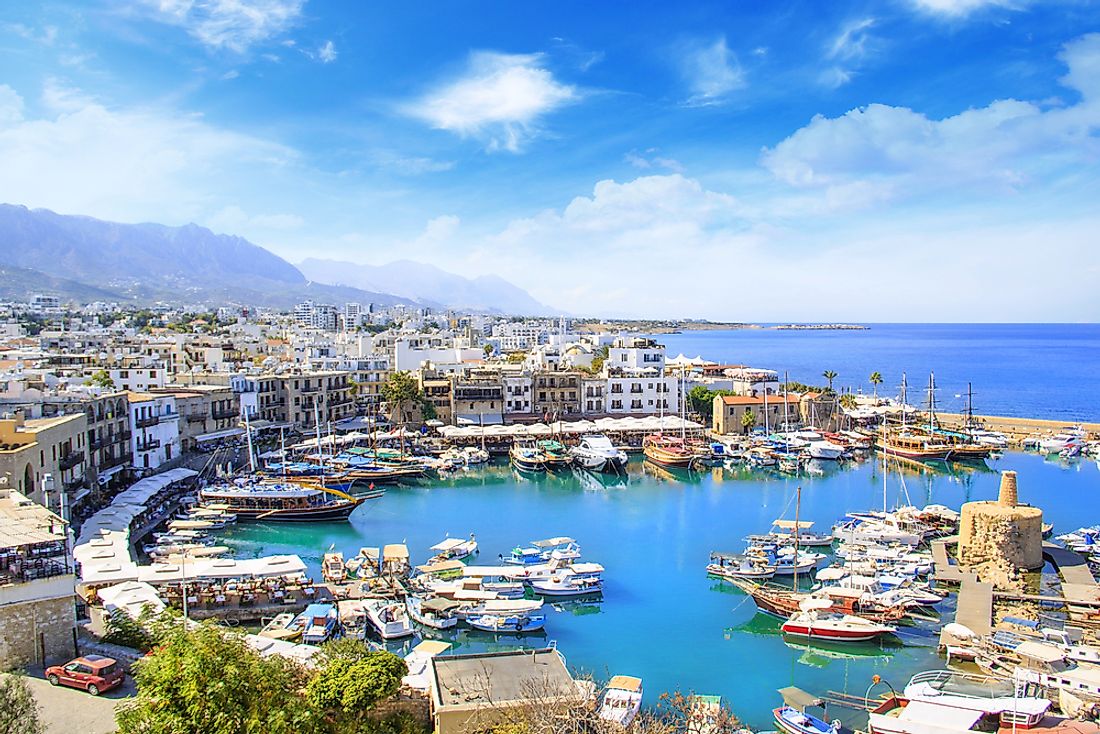
- Area: 9,251 km2
- Population: 1,198,580
- Capital: Nicosia
Cyprus is another island nation located in the Mediterranean Sea between Turkey and Egypt. The country covers an area of 9,251 km2 and has a population size of approximately 1.19 million. In 1961, Cyprus became a member of the Commonwealth of Nations after gaining its independence from Great Britain, and in 2004 it was accepted as a member of the European Union. Cyprus is a hub for foreign businesses due to its tax rates, which are below the European Union average. The country's economy relies on tourism, shipping services, and banking and financial services.
Egypt
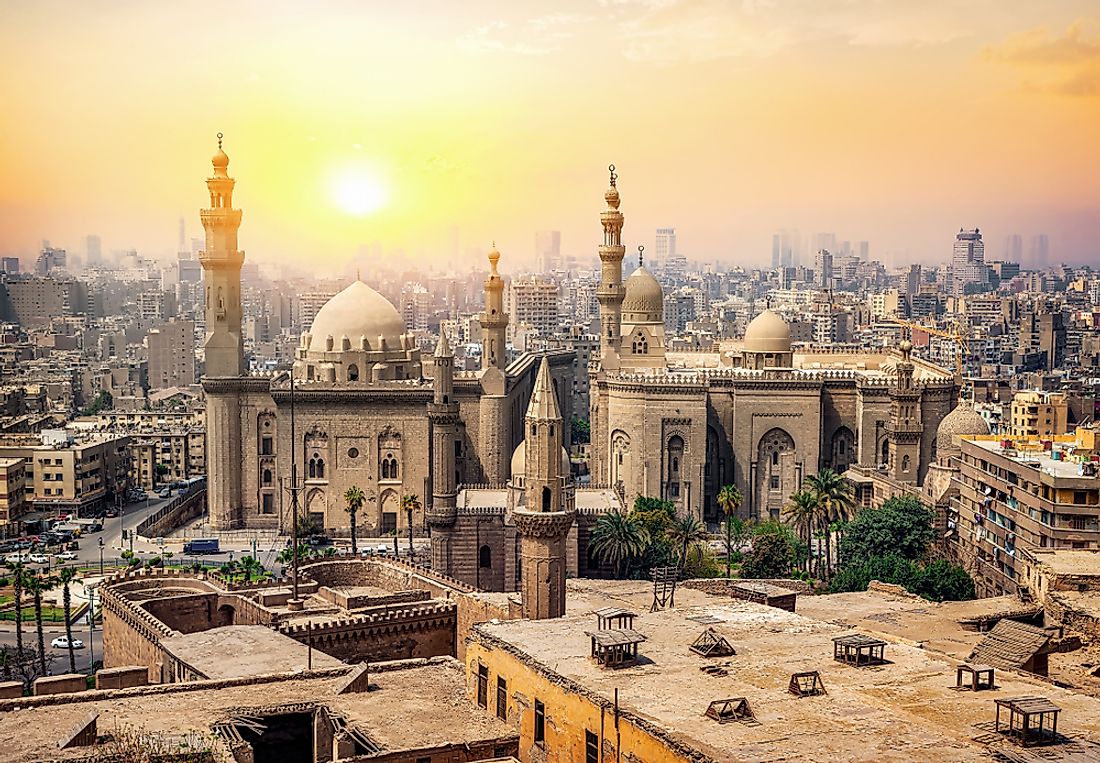
- Area: 1,010,40 km2
- Population: 100,388,070
- Capital: Cairo
Egypt located in the northeastern region of Africa, where it has borders along the Mediterranean Sea, the Red Sea, and the Gulf of Aqaba. Its territory also encompasses the Sinai Peninsula, which shares borders with Israel and Palestine. It is this peninsula that connects Egypt to the Middle East, making it a transcontinental country. Egypt covers a total area of 1,010,40 km2 and has a population size of over 100 million. Crude petroleum oil makes up nearly 25% of its exports. The rest of the economy relies on agriculture, tourism, and natural gas.
Iran
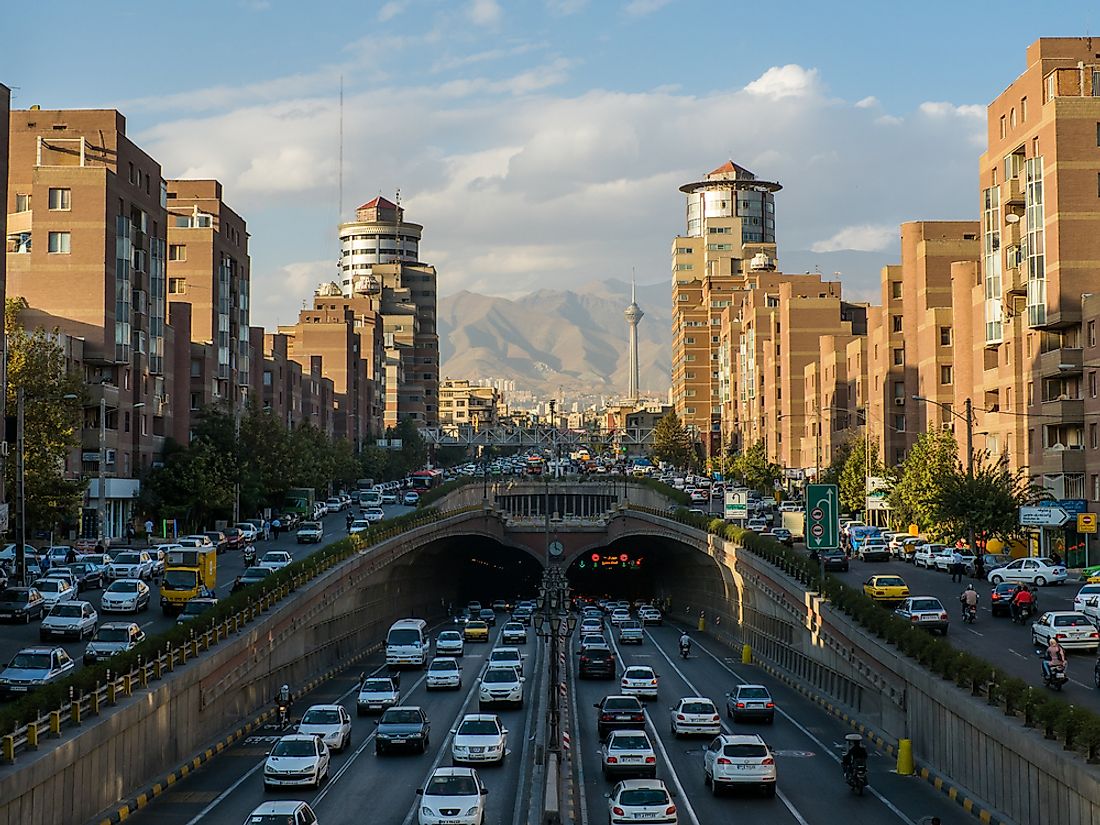
- Area: 1,648,195 km2
- Population: 82,913,910
- Capital: Tehran
Iran has coastlines along the Persian Gulf, the Caspian Sea, and the Gulf of Oman. It covers an area of 1,648,195 km2 and has a population size of approximately 83 million. Iran is home to the largest supply of natural gas in the world and the fourth-largest supply of oil reserves. The country is a member of both OPEC and the United Nations, as well as several other international organizations. The economy and gross domestic product (GDP) of Iran rely on the services sector.
Iraq
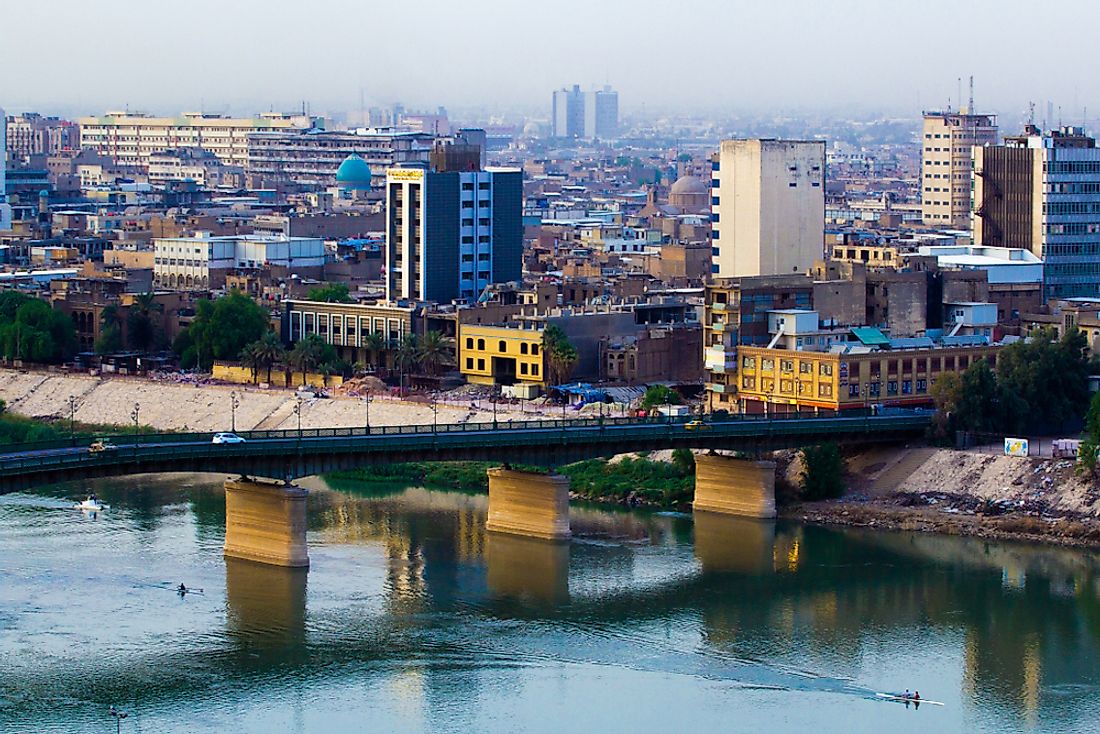
- Area: 438,317 km2
- Population: 39,309,780
- Capital: Baghdad
Iraq is almost entirely landlocked, except for a 36-mile long area located along the Persian Gulf. The country covers an area of 438,317 km2 and has a total population of 39 million. Iraq's economy has an unemployment rate that averages between 18% and 30%, and a GDP per capita of only $4,000. The majority of employment opportunities (roughly 60%) are in the public sector. The oil industry of Iraq makes up about 95% of its foreign exchange revenue.
Israel
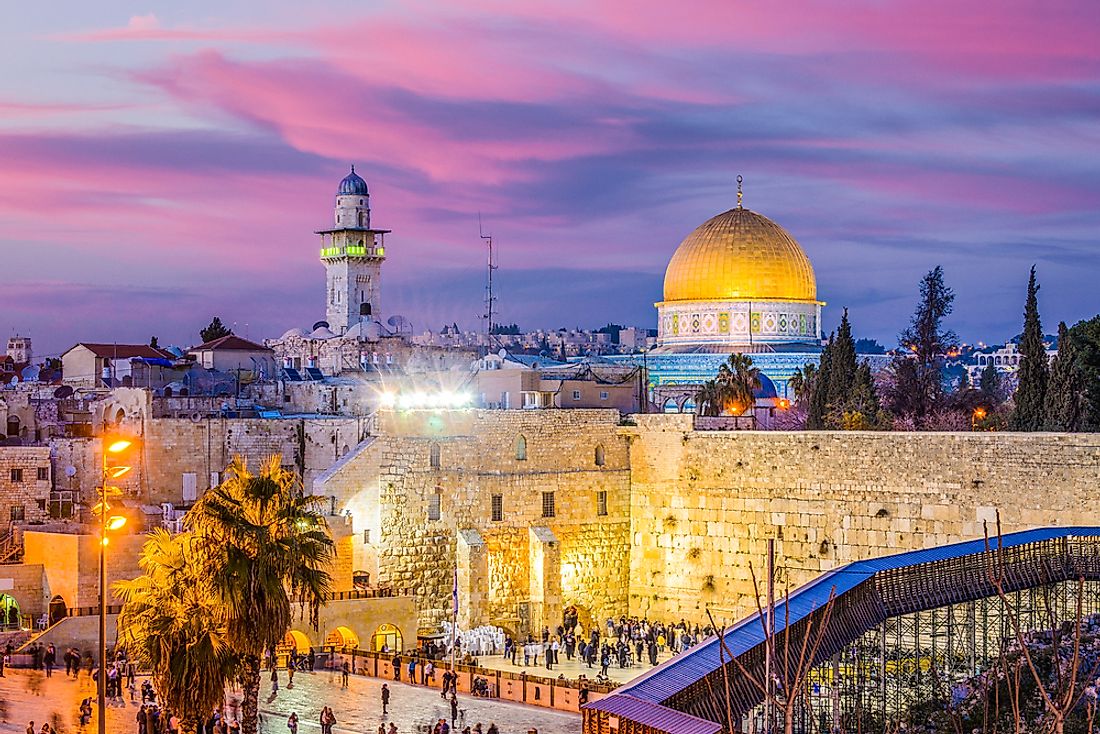
- Area: 20,770 km2
- Population: 9,053,300
- Capital: Jerusalem
Israel has coastlines along both the Red and the Mediterranean Seas and shares borders with several countries, including Jordan, Egypt, Syria, Lebanon, and the Gaza Strip. It covers an area of 20,770 km2 and has a population size of approximately 9 million. The majority of the population of Israel (around 74.7%) identify as Jewish. The country was created as a homeland for people of Jewish ethnicity and religion, and accordingly, it is often known as the Jewish State. Israel's economy is based on the technology and industrial sectors and is considered the most advanced in the Middle East.
Jordan
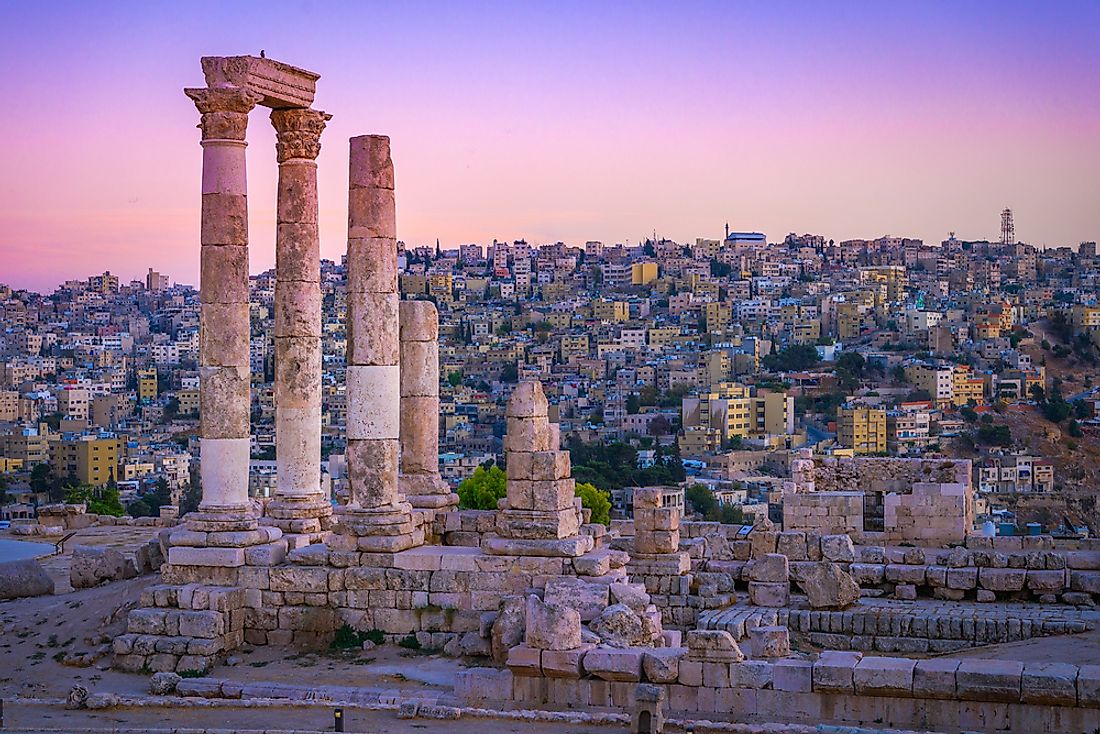
- Area: 92,300 km2
- Population: 10,101,690
- Capital: Amman
Jordan is located between the continents of Europe, Africa, and Asia, and has coastlines along both the Dead and Red Seas. It covers an area of 92,300 km2 and has a population size of over 10 million. The vast majority (92%) of the population identify as Sunni Muslims. The country is known as a safe haven for refugees in the area fleeing their homes due to terrorism and political instability. Jordan is considered one of the most politically stable countries in the Middle East.
Kuwait
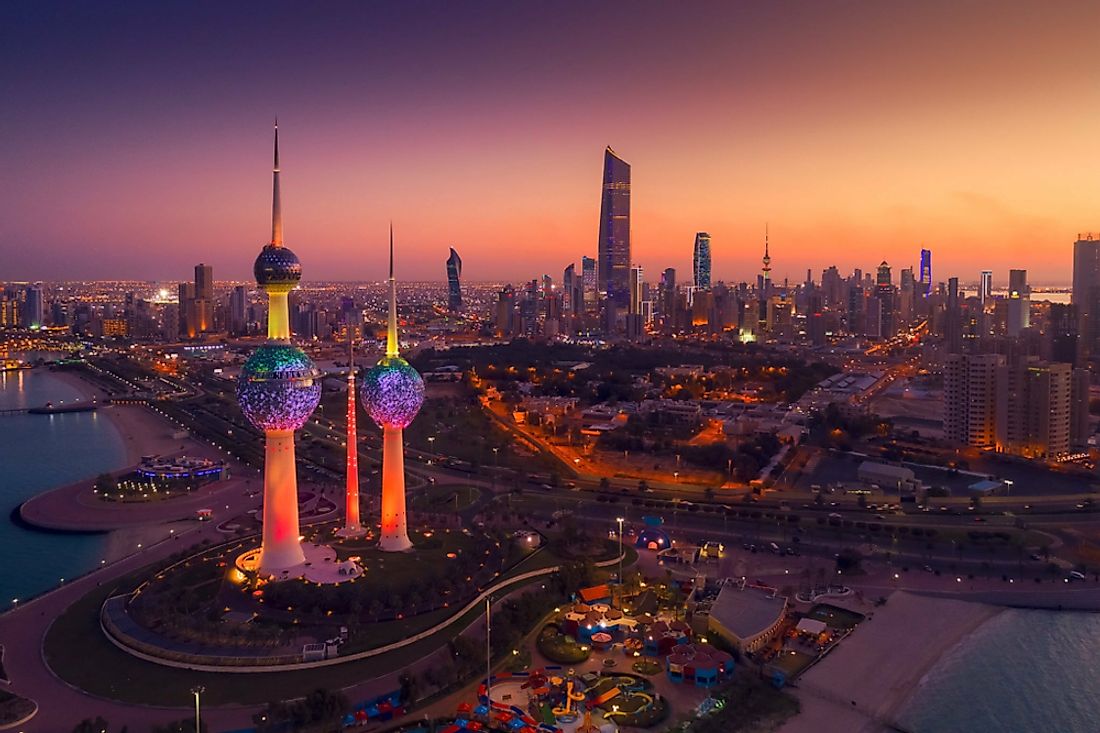
- Area: 17,820 km2
- Population: 4,207,080
- Capital: Kuwait City
Kuwait is at the northernmost edge of the Persian Gulf, where it covers an area of17,820 km2. The population of this country is just over 4.2 million, and approximately 70% of these individuals are foreign nationals. This high percentage of foreigners is primarily due to Kuwait's petroleum industry, which attracts a number of foreign workers. At least 87% of the country's exports are petroleum-based. The sector makes up around 50% of Kuwait's GDP.
Lebanon
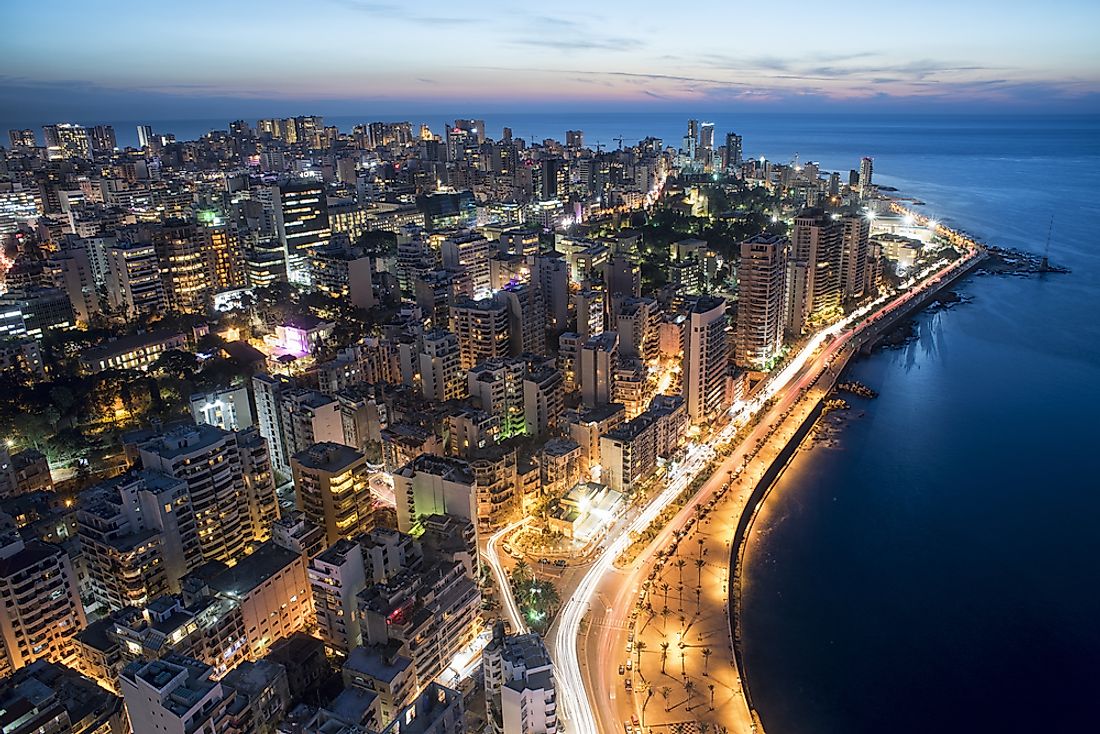
- Area: 10,400 km2
- Population: 6,855,710
- Capital: Beirut
Lebanon is one of the smallest, non-island countries in the Middle East, covering an area of 10,400 km2. It has a population size of just over 6.8 million, which is recognized for its diverse cultural and ethnic background. Lebanon's economy was able to resist the global economic crisis of 2008, managing to grow at a rate of 8.5% in 2008 and 9% in 2009. The services sector makes up the largest part of the country's economy and employs approximately 65% of the population.
Oman
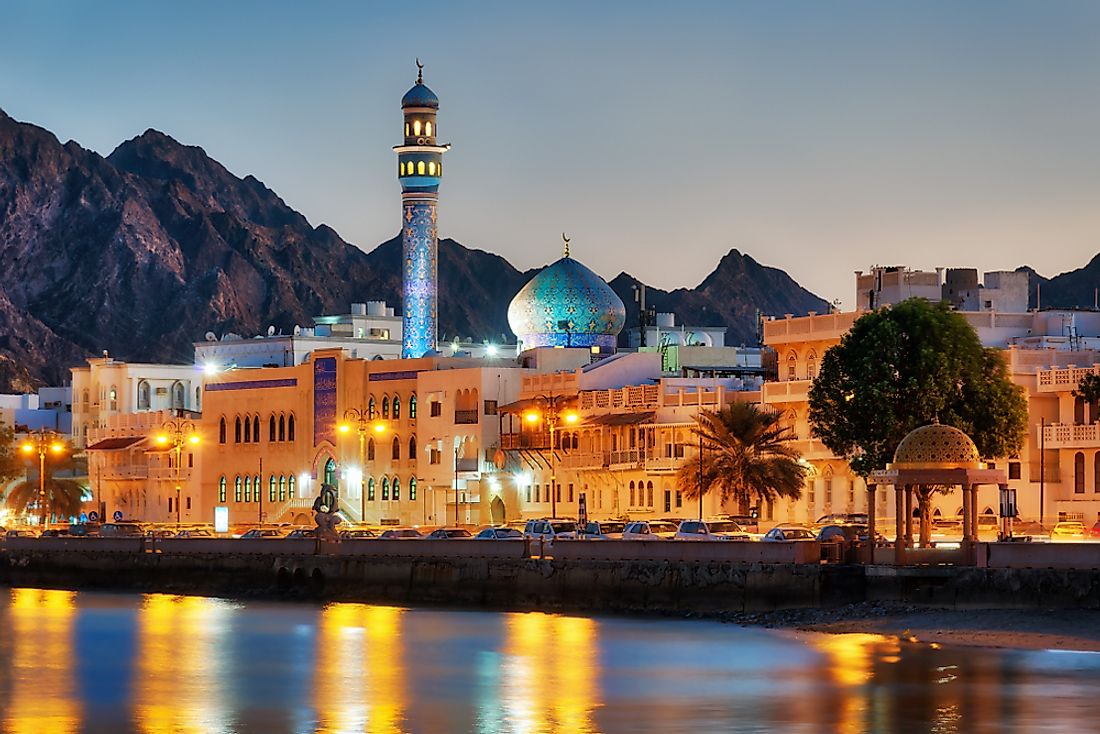
- Area: 309,500 km2
- Population: 4,974,990
- Capital: Muscat
Oman is located along the southeastern coast of the Arabian Peninsula, giving it a long coastline along the Arabian Sea. The country covers an area of 309,500 km2 and has a population size of around 4.97 million. Its government is considered an absolute monarchy and all government responsibilities carried out by the Sultan, which a hereditary position. The economy of Oman depends on the oil and petroleum industry, particularly as its largest export contributor. However, the tourism industry in Oman is growing rapidly.
Palestine
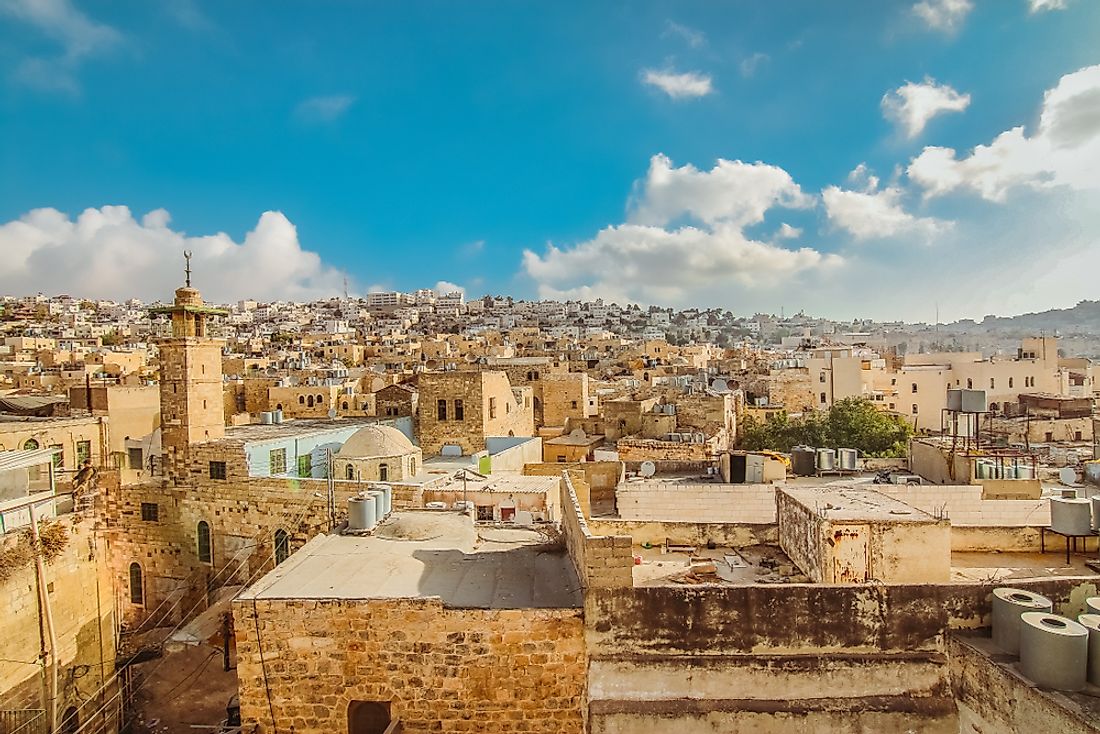
- Area: 6,020 km2
- Population: 4,685,310
- Capital: Ramallah1
Palestine shares borders with both Israel and Jordan and the country claims ownership of the Gaza Strip and West Bank regions. Palestine covers an area of 6,020 km2 and has a population size of 4.68 million. The nation has engaged in the decades-long conflict with Israel over Israeli-occupied lands, which were ruled by the Israeli Military Governorate from 1967 until 1982. The services industry in Palestine makes up 82% of the country's $10 Billion GDP.
Qatar
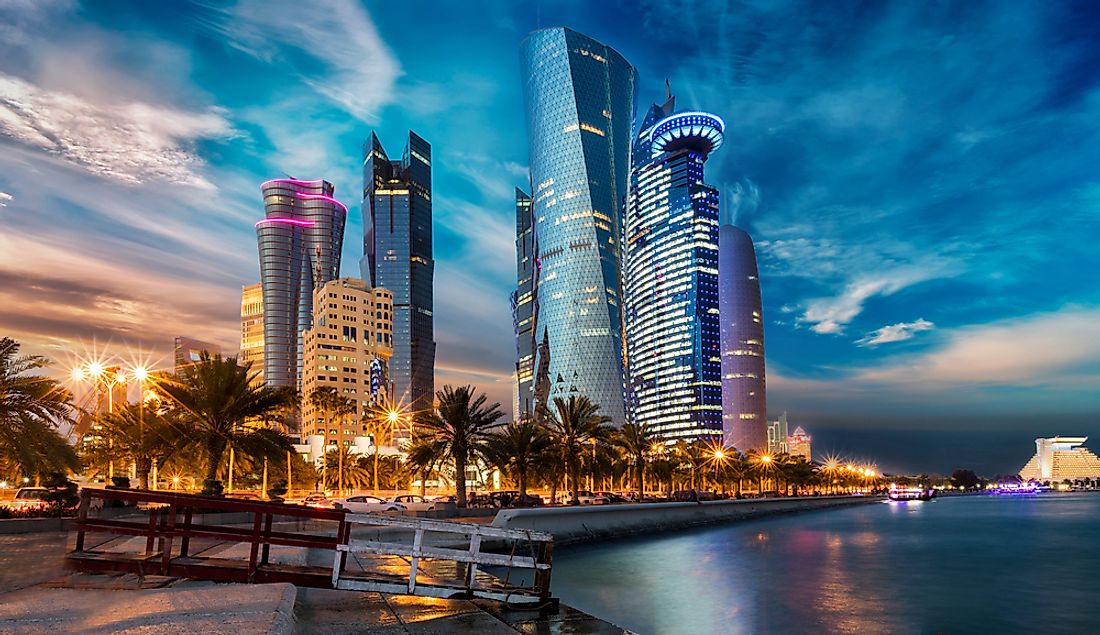
- Area: 11,586 km2
- Population: 2,832,070
- Capital: Doha
Qatar is along the eastern coast of the Arabian Peninsula, where it covers an area of 11,586 km2. This country has a population size of over 2.83 million, 2.3 million of which are foreign nationals. This large percentage of foreign-born residents is due to the natural gas and oil industries, which draw a significant number of immigrant workers every year.
Saudi Arabia
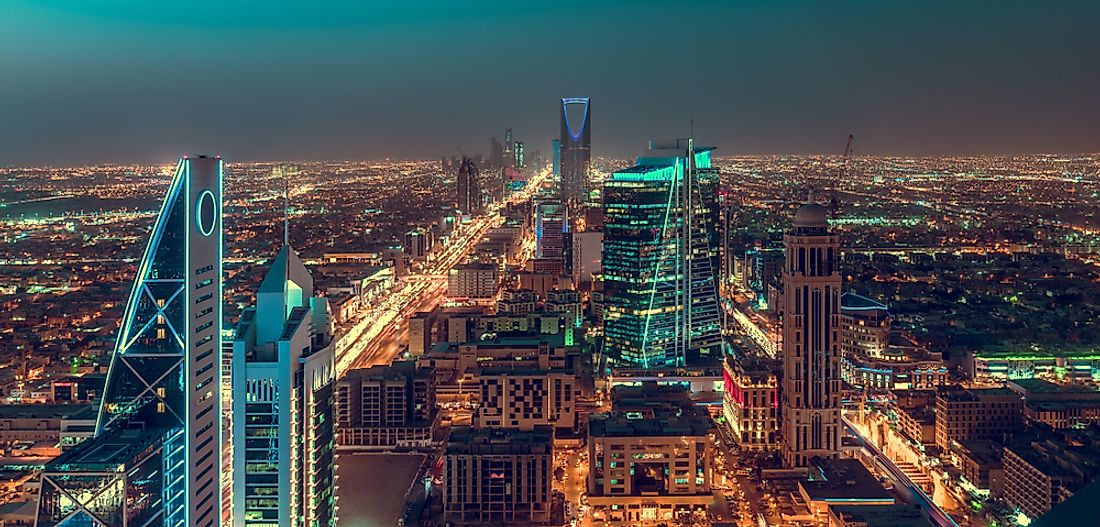
- Area: 2,149,690 km2
- Population: 34,268,530
- Capital: Riyadh
Saudi Arabia is the largest country in the Middle East and covers an area of 2,149,690 km2. It has a population size of approximately 34 million, 90% of which identify as Arabs. The country's population had grown significantly since 1950, when it was only around 3 million, due to a faster-than-average birth rate. The majority of individuals in Saudi Arabia speak 1 of 3 Arabic dialects: Najdi, Hejazi, and Gulf.
Syria
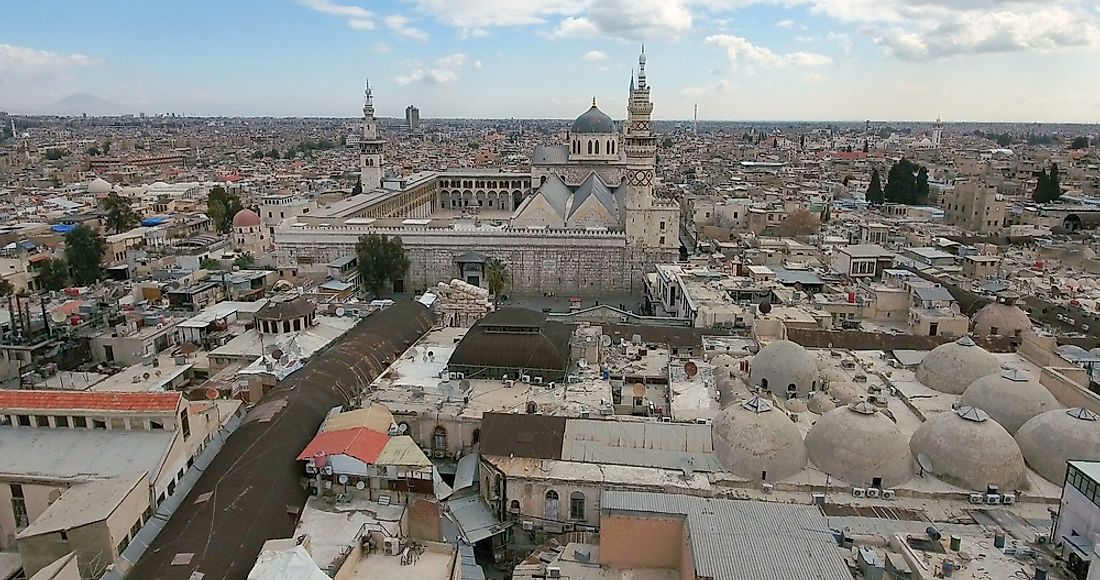
- Area: 187,437 km2
- Population: 17,070,130
- Capital: Damascus
Syria is located in the western region of the Middle East and covers an area of 187,437 km2. The country's population is estimated at approximately 17 million, although that number may be inaccurate given the inability to perform an accurate census in recent years. The population represents a decrease over previous years, given a large number of people who have been killed or fled the country due to civil war, military violence, and political instability. At least 5 million individuals have sought refuge in other countries, while another 7.6 million are internally displaced.
Turkey
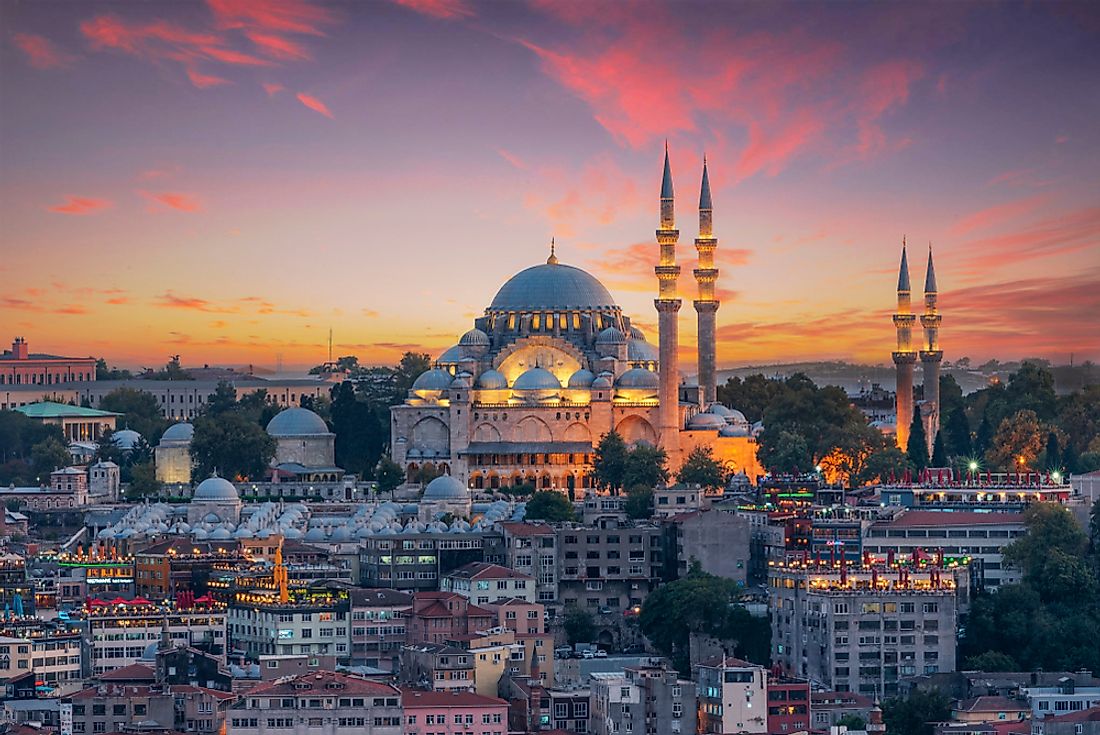
- Area: 783,562 km2
- Population: 83,429,620
- Capital: Ankara
Turkey is located between Europe and Asia and is considered a transcontinental country. It covers an area of 783,562 km2 and has a population size of around 83.4 million. Between 70% and 80% of this population identifies as ethnic Turks. Turkey is newly industrialized and has a GDP of $2.199 trillion, over half of which is generated by the services industry.
United Arab Emirates
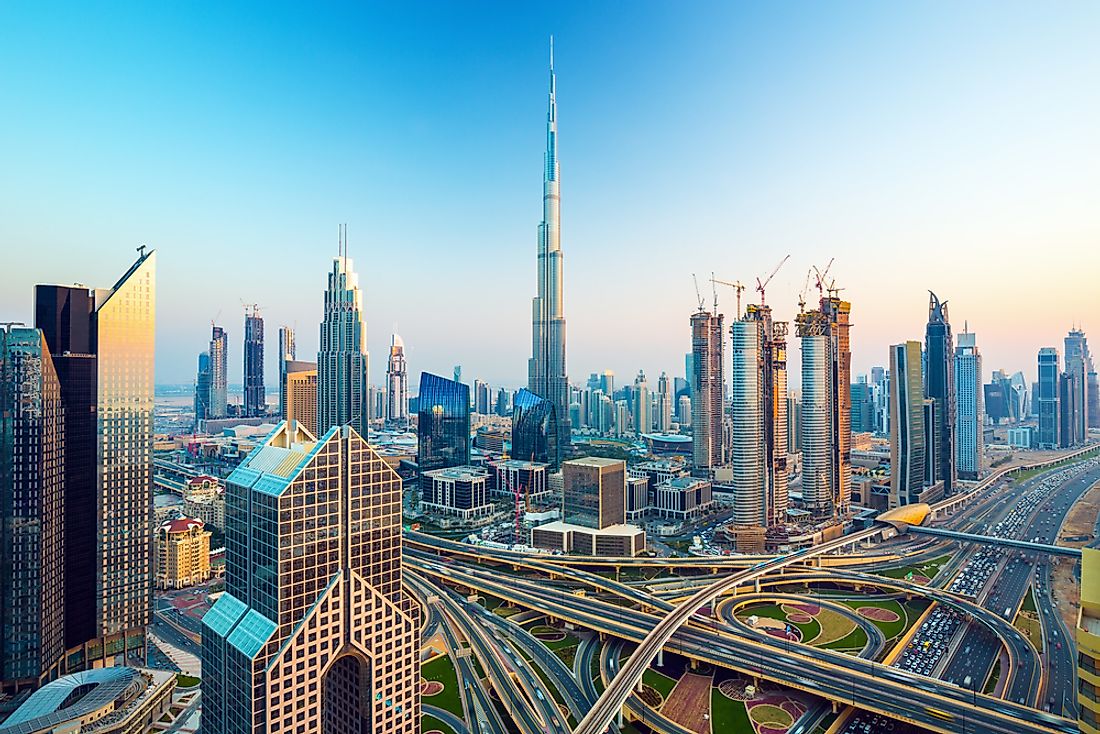
- Area: 83,600 km2
- Population: 9,770,530
- Capital: Abu Dhabi
The United Arab Emirates (UAE) is along the southeastern edge of the Arabian Peninsula. It covers an area of 83,600 km2 and has a population size of approximately 9.7 million. This country has one of the largest economies in the Middle East, with a GDP of around $377 billion. Like most economies in this region of the world, the UAE depends heavily on the oil industry.
Yemen
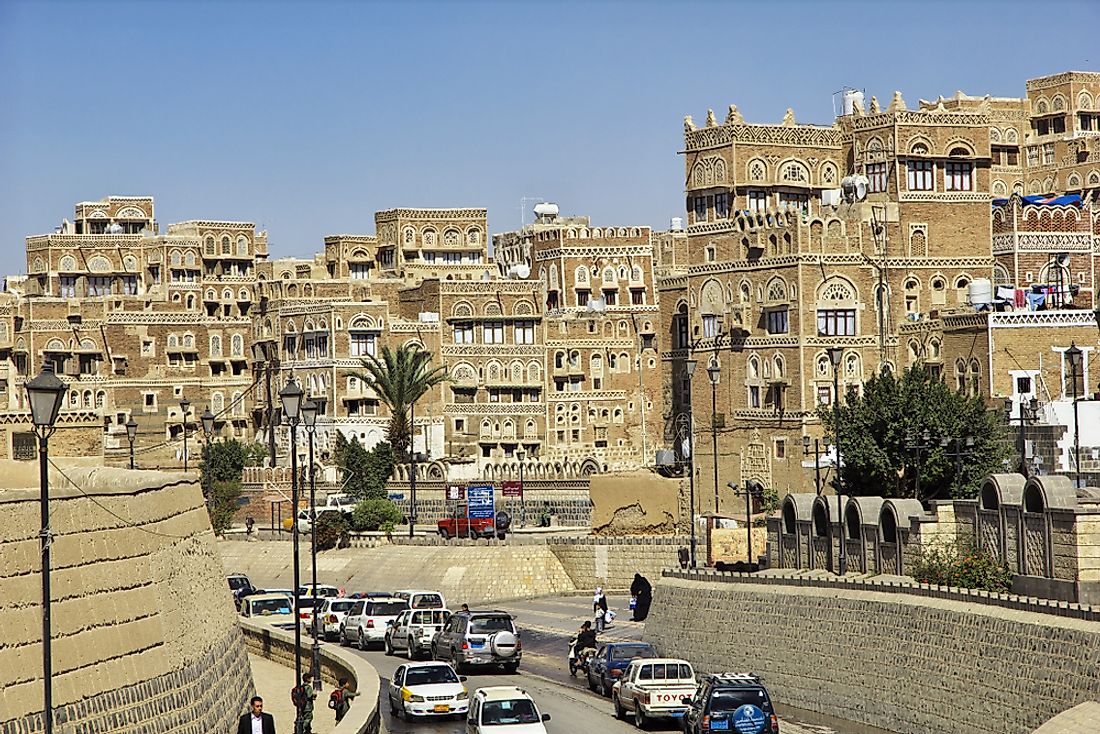
- Area: 527,968 km2
- Population: 29,161,920
- Capital: Sana'a
Yemen is along the southwestern coast of the Arabian Peninsula, where it covers a total area of 527,968 km2. The country has a population size of over 29 million, nearly half of which is 15 years of age or younger. Because of these demographics, as well as various other factors, Yemen's population is expected to reach 60 million by 2050. The economy of Yemen, like many other middle eastern countries, focuses on the petroleum industry, which also makes up 73% of its exports.
List of Middle Eastern Countries
| Rank | Country, with flag | Area (km²) | Population | Density (per km²) | Capital | Nominal GDP (2012) | Per capita (2012) | Currency | Government | Official languages |
|---|---|---|---|---|---|---|---|---|---|---|
| 1 | Bahrain | 760 | 1,641,170 | 2012.1 | Manama | $30.355 billion | $26,368 | Bahraini dinar | Absolute monarchy | Arabic |
| 2 | Cyprus | 9,251 | 1,198,580 | 128.71 | Nicosia | $22.995 billion | $26,377 | Euro | Presidential republic | Greek, Turkish |
| 3 | Egypt | 1,001,450 | 100,388,070 | 98.87 | Cairo | $262.26 billion | $3,179 | Egyptian pound | Presidential republic | Egyptian Arabic |
| 4 | Iran | 1,648,195 | 82,913,910 | 50.22 | Tehran | $548.59 billion | $7,207 | Iranian rial | Islamic republic | Persian |
| 5 | Iraq | 438,317 | 39,309,780 | 88.53 | Baghdad | $216.04 billion | $6,410 | Iraqi dinar | Parliamentary republic | Arabic, Kurdish |
| 6 | Israel | 21,937 | 9,053,300 | 410.48 | Jerusalem | $257.62 billion | $33,451 | Israeli shekel | Parliamentary republic | Hebrew, Arabic |
| 7 | Jordan | 89,342 | 10,101,690 | 112.14 | Amman | $30.98 billion | $4,843 | Jordanian dinar | Constitutional monarchy | Arabic |
| 8 | Kuwait | 17,818 | 4,207,080 | 232.17 | Kuwait City | $184.54 billion | $48,761 | Kuwaiti dinar | Constitutional monarchy | Arabic |
| 9 | Lebanon | 10,400 | 6,855,710 | 669.49 | Beirut | $42.519 billion | $10,425 | Lebanese pound | Parliamentary republic | Arabic |
| 10 | Oman | 309,500 | 4,974,990 | 15.6 | Muscat | $78.290 billion | $25,356 | Omani rial | Absolute monarchy | Arabic |
| 11 | Palestine | 6,020 | 4,685,310 | 759 | Ramallah1 | $6.6 billion | $1,600 | Israeli shekel, Jordanian dinar | Semi-presidential republic | Arabic |
| 12 | Qatar | 11,586 | 2,832,070 | 242.10 | Doha | $192.40 billion | $104,756 | Qatari riyal | Absolute monarchy | Arabic |
| 13 | Saudi Arabia | 2,149,690 | 34,268,530 | 15.68 | Riyadh | $733.95 billion | $25,139 | Saudi riyal | Absolute monarchy | Arabic |
| 14 | Syria | 187,437 | 17,070,130 | 92.07 | Damascus | n/a | n/a | Syrian pound | Presidential republic | Arabic |
| 15 | Turkey | 783,562 | 83,429,620 | 106.96 | Ankara | $788.04 billion | $10,523 | Turkish lira | Parliamentary republic | Turkish |
| 16 | United Arab Emirates | 83,600 | 9,770,530 | 135.61 | Abu Dhabi | $383.79 billion | $43,774 | UAE dirham | Federal Absolute monarchy | Arabic |
| 17 | Yemen | 527,968 | 29,161,920 | 53.98 | Sana'a | $35.05 billion | $1,354 | Yemeni rial | Presidential republic | Arabic |











